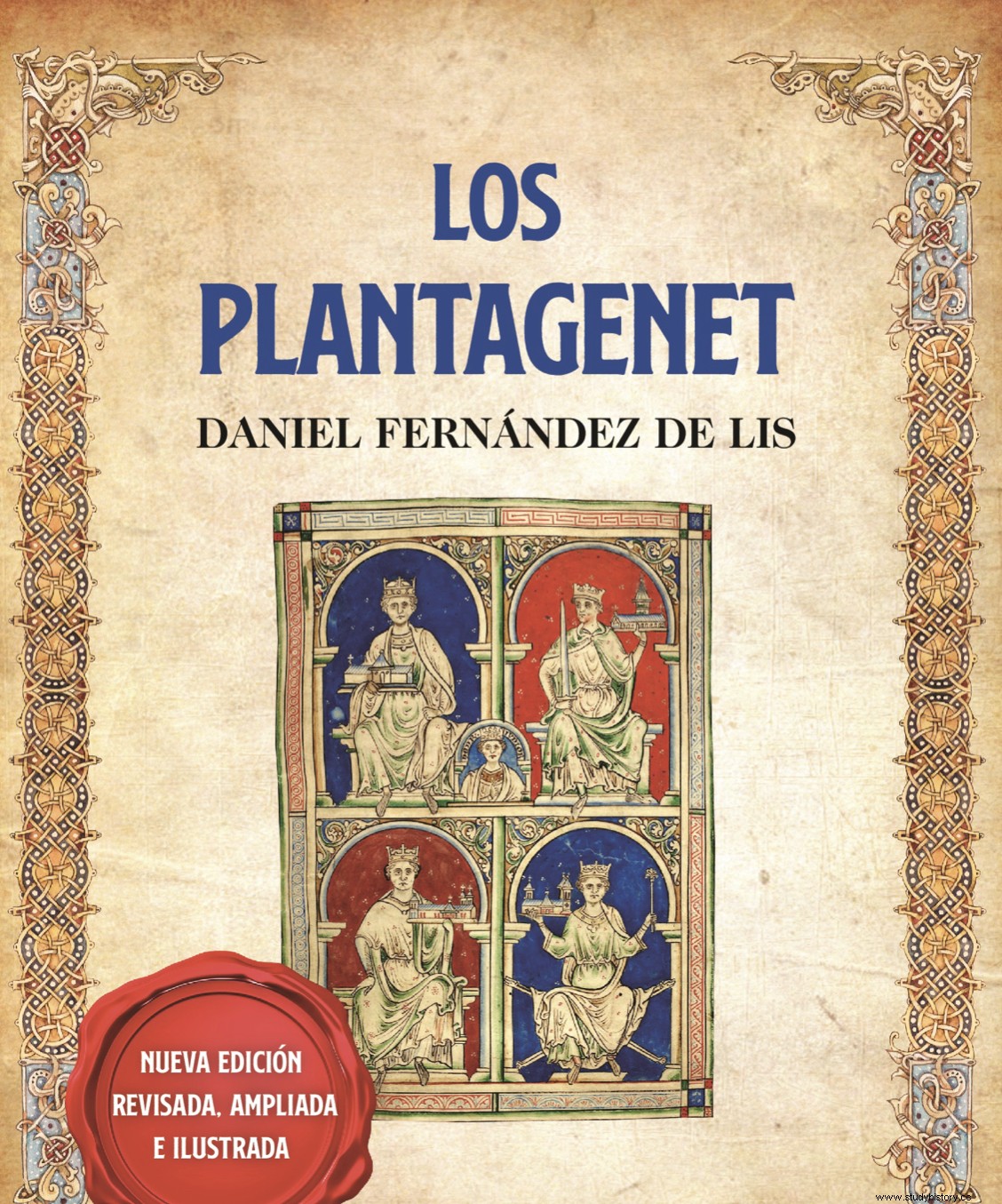
Entry taken from the book The Plantagenet
In some blog posts we have talked about the crucial moment that the conquest of England by the Normans meant for the history of the British country (see the post dedicated to the year 1066). After the settlement of the Normans on the English throne there was another event, as not infrequently linked to a marriage that would be destined to change the history of England and is related to the protagonist of this entry, the Empress Matilda.
Let's go back in time a bit; after the accession to the throne of the first Norman king of England William "The Conqueror" was succeeded by his two sons, first William II and then Henry I. He had two offspring, William and Matilda. The succession seems assured with his son, but then something happens that alters all the plans of the king and the history of the country. As the kings of England hold sovereignty in the French lands of Normandy, the royal family travels by boat between the two shores of the English Channel. In one of them, on board the White Ship, the heir Guillermo is shipwrecked and perishes. It is an episode dealt with in many works of fiction and is narrated in a detailed and entertaining way in the original Coresponsal en la Historia blog that I strongly recommend and whose entry I link here for those interested in learning more about this episode:the Shipwreck of the White Ship.
William's death causes Henry I a huge succession problem; he only has one other legitimate descendant and in addition to being a woman she is a widow and childless. There is nothing regulated in the recent Anglo-Norman monarchy about the possibility of a woman inheriting the crown, but for the mentality of the time in which kings are the first in the line of battle, it seems unlikely that Matilda would be accepted as queen . The oath of the nobles of her kingdom accepting her seems, in Enrique's life and full youth, little more than a dead letter.
Indeed, Matilda's role, as usual at the time, is to offer her in betrothal to a monarch with whom her kingdom is interested in establishing closer relations; in this case with the Holy Roman Emperor, Henry. Hence her title that, despite the early death of her husband, she always insisted on keeping Matilda as empress.
Upon the emperor's death, Matilda returns to England with a poorly defined role until the death of her brother William; at that moment Henry I, despite the aforementioned oath, decides that it is necessary to remarry her; if she doesn't have a male heir, she may be able to have a grandson before she dies. And the choice of husband for her daughter Matilda is once again a masterpiece of political strategy:Godfrey of Anjou, a kingdom located on the southern border of Henry's Norman domains and which can cushion the tension with France. The Anjou are known as the "Angevin" dynasty and Godofredo usually wears a plant on his hat that is known in Latin as "planta genesta".
But, as expected, when Henry I died in 1135, the main nobles of the kingdom reneged on the oath of allegiance to his daughter Matilda and took the side of his nephew Esteban. This causes the country to be involved for almost twenty years in a bloody civil war between the supporters of both candidates for the throne.
In 1148 Matilda retires to Normandy and leaves the defense of her cause in the hands of her son Henry of Anjou. Henry becomes Duke of Normandy in 1150 when his father gives him his title and Count of Anjou in 1151 when Geoffrey dies. And on March 18, 1152, to the surprise and scandal of all Christendom, he married Eleanor of Aquitaine, who until just two months before had been married to Louis VII of France. The blow of effect is tremendous, not only because of the humiliation that it supposes for its French rival, but also because adding Eleanor's properties as Duchess of Aquitaine and Poitou to those of Enrique in Normandy and Anjou, the couple owns the entire western part of France and its dominions are equal in extent to those of the French king.
In 1153 Henry disembarks again in England and after several skirmishes his army meets Stephen's at Wallingford. There, soldiers from both sides are reluctant to engage in combat, fed up with eighteen years of useless death and destruction. Enrique and Esteban meet and agree to put an end to the war, reaching the commitment of Henry's recognition of Esteban as legitimate king in exchange for the fact that he in turn designates Henry of Anjou as heir. The agreement is sealed by solemn acts first in Winchester and then in London.
Henry returns to France and there he hears the news of Stephen's death on October 25, 1154. Henry II wears the English crown and, together with his formidable wife Eleanor of Aquitaine, are crowned on December 19 of the same year and begin the reign of the dynasty that would occupy the English throne for more than three hundred years:the Plantagenets.
To the usual recommendations on entries relating to medieval England (Peter Ackroyd «The History of England. Volume I:Foundation»; Roy Strong «The Story of Britain»»A History of Britain» by Simon Schama, with the careful workmanship typical of a BBC production, and «Monarchy» by David Starkey), I add another BBC DVD series on English queens called «She Wolves» and in fiction the famous novel "The Pillars of the Earth" by Ken Follet in which the shipwreck of the "White Ship" and Matilda have a leading role.
